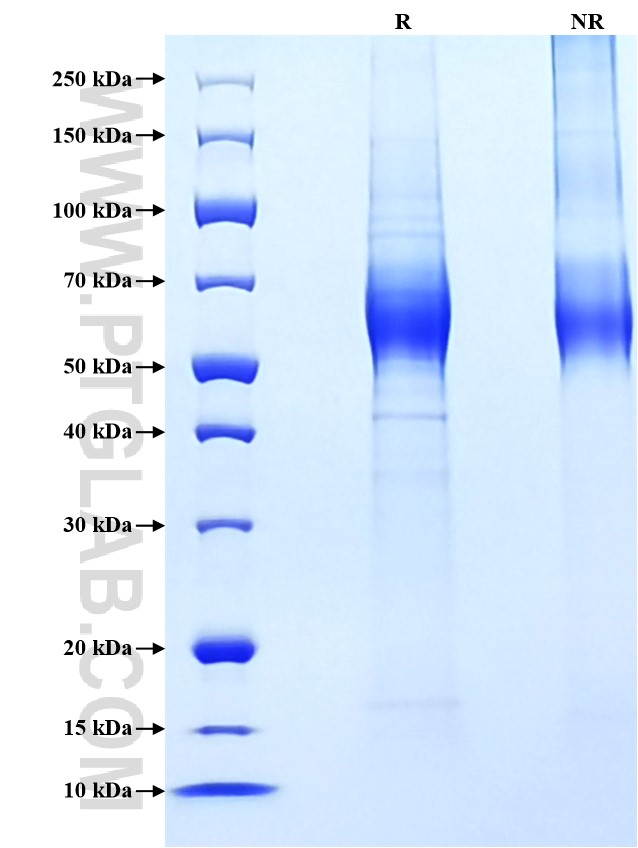Recombinant Human IL-23R protein (His Tag)
种属
Human
纯度
>90 %, SDS-PAGE
标签
His Tag
生物活性
未测试
验证数据展示
产品信息
| 纯度 | >90 %, SDS-PAGE |
| 内毒素 | <0.1 EU/μg protein, LAL method |
| 生物活性 | Not tested |
| 来源 | HEK293-derived Human IL-23R protein Gly24-Gly355 (Accession# Q5VWK5-1) with a His tag at the C-terminus. |
| 基因ID | 149233 |
| 蛋白编号 | Q5VWK5-1 |
| 预测分子量 | 39.1 kDa |
| SDS-PAGE | 50-70 kDa, reducing (R) conditions |
| 组分 | Lyophilized from 0.22 μm filtered solution in PBS, pH 7.4. Normally 5% trehalose and 5% mannitol are added as protectants before lyophilization. |
| 复溶 | Briefly centrifuge the tube before opening. Reconstitute at 0.1-0.5 mg/mL in sterile water. |
| 储存条件 |
It is recommended that the protein be aliquoted for optimal storage. Avoid repeated freeze-thaw cycles.
|
| 运输条件 | The product is shipped at ambient temperature. Upon receipt, store it immediately at the recommended temperature. |
背景信息
Interleukin-23 receptor (IL23R) is a type I cytokine receptor that plays a pivotal role in the immune system, particularly in the maturation and function of T helper 17 (Th17) cells. IL23R, along with IL12Rβ1, forms the receptor complex necessary for IL-23 signaling, which is critical for the production of IL-17 and the activation of pro-inflammatory activities. This receptor is expressed on various immune cells, including T cells, NK cells, dendritic cells, and macrophages. Research has shown that variations in the IL-23R gene can significantly influence susceptibility to several diseases, particularly inflammatory bowel diseases such as ulcerative colitis (UC) and Crohn's disease (CD). In addition to UC, IL-23R has been implicated in other inflammatory conditions, including rheumatoid arthritis and ankylosing spondylitis.
参考文献:
1.Mezghiche I, et al. (2024) Eur J Immunol. 54 (1):e2250348. 2.Peng LL, et al.(2017) Oncotarget. 8 (3):4849-4863. 3.Hamdy G, et al. (2015) Hum Immunol. 76 (6):417-20.
